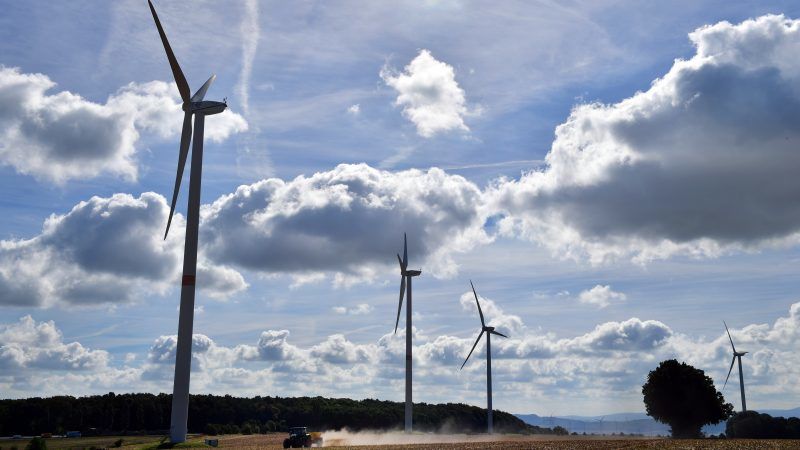General
Nigeria Seeks $10bn Yearly to Achieve Energy Transition Goal

By Adedapo Adesanya
Nigeria’s Vice President, Mr Yemi Osinbajo, has said that Nigeria is seeking $10 billion in investment yearly to achieve its energy transition goal.
Mr Osinbajo stated this in his remarks delivered at the global virtual launch of Nigeria’s Energy Transition Plan, a roadmap to tackle the dual crises of energy poverty and climate change.
He said Africa’s increasing energy gaps require collaboration to take ownership of the continent’s transition pathways and the action should be decisive and urgent.
Speaking on the need to have a peculiar transition plan, the Vice President said “for Africa, the problem of energy poverty is as important as our climate ambitions. Energy use is crucial for almost every conceivable aspect of development. Wealth, health, nutrition, water, infrastructure, education, and life expectancy are significantly related to the consumption of energy per capita.”
He highlighted the significant scale of resources required to attain both development and climate ambitions, adding that Nigeria would need to spend $410 billion above business-as-usual spending to deliver our Transition Plan by 2060, which translates to about $10 billion per year.
“The average of $3 billion per year investments in renewable energy recorded for the whole of Africa between 2000 and 2020 will certainly not suffice,” he added.
Additionally, the Vice President noted that “we have an inter-ministerial Energy Transition Implementation Working Group, which I chair. We are currently engaging with partners to secure an initial $10 billion support package ahead of COP27 along the lines of the South African Just Energy Transition Partnership announced at COP26 in Glasgow.
Giving more details on energy poverty in Africa, the VP noted that “the current lack of power hurts livelihoods and destroys the dreams of hundreds of millions of young people.
“And although Africa’s current unmet energy needs are huge, future demand will be even greater due to expanding populations, urbanization, and movement into the middle class.
“It is clear that the continent must address its energy constraints and would require external support and policy flexibility to deliver this. Unfortunately, in the wider responses to the climate crisis, we are not seeing careful consideration and acknowledgement of Africa’s aspirations.”
Underscoring the importance of collaboration, the Vice President then noted that “we developed our Energy Transition Plan to engage with the rest of the world in a serious, thorough and data-backed manner.”
Mr Osinbajo explained that “there is a clear need for African nations to engage more critically and vocally in conversations on our global climate future.
“More importantly, we need to take ownership of our transition pathways and design climate-sensitive strategies that address our growth objectives. This is what Nigeria has done with our Energy Transition Plan.”
Making reference to the Nigeria Energy Transition Plan, the Vice President said “the plan was designed to tackle climate change and deliver SDG7 by 2030 and net-zero by 2060 while centring the provision of energy for development, industrialization and economic growth.”
According to him, “we anchored the plan on key objectives including lifting 100 million people out of poverty in a decade, driving economic growth, bringing modern energy services to the full population and managing the expected long-term job losses in the oil sector due to global decarbonization.
“Given those objectives, the plan recognizes the role natural gas must play in the short term to facilitate the establishment of baseload energy capacity and address the nation’s clean cooking deficit in the form of LPG.
“The plan envisions vibrant industries powered by low-carbon technologies; streets lined with electric vehicles and livelihoods enabled by sufficient and clean energy.”
On other aspirations of the roadmap, Mr Osinbajo explained that “the plan has the potential to create about 340,000 jobs by 2030, and 840,000 by 2060. It also presents a unique opportunity to deliver a true low-carbon and rapid development model in Africa’s largest economy.”
“We are currently implementing power sector initiatives and reforms focused on expanding our grid, increasing generation capacity, and deploying renewable energy to rural and underserved populations.”
Aside from the transition plan, the Vice President announced the launch of the Universal Energy Facility “an innovative, results-based, finance programme that focuses specifically on scaling up electricity access for productive uses.”
He explained that “the Universal Energy Facility will provide grant payments to enable solar companies to expand their operations to small and medium-sized enterprises across Nigeria, while crowding-in additional private capital.”
“Projects supported by the Universal Energy Facility will help grow businesses and create jobs, making them key contributors to our Energy Transition Plan.
“I’d like to encourage solar companies in attendance today to engage with this innovative financing opportunity, which is being managed by Sustainable Energy for All,” he added.
General
Lagos to Get New Building Code in 2025

By Adedapo Adesanya
The Lagos State Government has expressed its readiness to get a brand-new Building Code next year, to achieve the high-performance standards needed to make Lagos a sustainable and Smart City.
The government’s readiness was disclosed at the Lagos State Executive Council Retreat on the Domestication of the Lagos Building Code, organised by the Office of the Special Adviser on e-GIS and Urban Development, held at Ikeja GRA on Wednesday.
Speaking during the retreat, Lagos State Governor, Mr Babajide Sanwo-Olu emphasised the need for more collaboration among all the ministries and agencies in the built sector, to ensure the state development in line with global best practices.
He said the motive behind the Lagos Building Code is to have a building regulation that would make Lagos much more resilient.
“We (Lagos State Government) are the first to domesticate the National Building Code, which is the creation of the Federal Government. We are not doing anything outside the vision at the sovereign and sub-sovereign levels. But what is unique about our own is the fact that all the cabinet members see the need to have an input because it would be an outcome that would affect lives and different ministries and agencies.
“So, there is a need for everybody to have a say, and at the end of the day, collectively we will resolve to have a way.
“What we are trying to do is for Lagos State to do what is obtainable internationally: have a building regulation in which we have a standard of construction in design, manner of land use occupancy, and use of building materials, which we believe would eventually improve and help with health, safety, and occupancy issues.
“It is all about building sustainably, making Lagos a lot more resilient and able to absorb shock in the future and able to stand in the comity of developed cities and city-states as we see in various parts of the world,” he said.
The Special Adviser to the Governor on eGIS and Urban Development, Mr Olajide Babatunde, stated that the Lagos Building Code is to complement the existing regulatory framework and provide a comprehensive solution to the challenges of land use, physical development, and urban planning.
Mr Babatunde said the Lagos Building Code will regulate building control, planning permission, and address the issues of setbacks; take care of the safety and sustainability of the environment; and also prevent the collapse of buildings.
“We have been working on the domestication of the National Building Code, and by next year, we are going to have our own brand-new Lagos Building Code. We have worked with professional bodies and people from academia, market women, and the public in general, and through a participatory approach, we can come out with a document that is acceptable to everyone and useful to the entire state,” he said.
Also speaking, the Special Adviser to the Governor on Infrastructure, Mr Olufemi Daramola, described the Lagos State Building Code initiative by the Babajide Sanwo-Olu administration as the next step to Green Lagos that will enable the state to plan buildings properly and ensure durable infrastructure in the state.
During the retreat, members of the Lagos State Executive Council brainstormed and advocated aggressive sensitisation for residents of the State on the Lagos Building Code before implementation.
General
Apostle Femi Lazarus Emerges Most Streamed Podcast in Nigeria on Spotify

By Modupe Gbadeyanka
A report released by Spotify has revealed that in 2024, Apostle Femi Lazarus was the most streamed podcast on its platform, closely followed by Motivation Daily by Motiversity.
Podcasts are one of Africa’s favourite ways to tell stories. With almost 4 billion minutes of podcast audio played in Sub-Saharan Africa in 2024, the continent’s appetite for this content is loud and clear.
South Africa, Nigeria, and Kenya listened to the most shows this year, with South Africa contributing over 2 billion minutes. If you started playing podcasts on one device today, it would make for about 30 centuries of listening.
“The numbers don’t lie. Podcasting is here to stay because it lets creators take control of their narratives and tell these stories on their terms while bringing their community along for the journey,” the Sub-Saharan Africa Podcast Manager for Spotify, Ncebakazi Manzi, stated.
Motivational shows around issues like managing finances, relationships, personal goals and health remain popular across the three leading countries. Shows like “The Diary Of A CEO with Steven Bartlett”, “Motivation Daily by Motiversity” and “The Success Addicted Podcast” have attracted listeners who want to get their lives in order and learn from the stories of inspirational people.
Audiences in Nigeria and South Africa embrace shows about spirituality. “Christian Motivation” had one of the most shared episodes in South Africa while “Apostle Joshua Selman” maintained his popularity in Nigeria for another year. As the continent’s second-largest podcast market, Nigeria listened to 700 million minutes in 2024 and it created half of the new shows published in Sub-Saharan Africa this year.
Even though spirituality dominated Nigeria’s top charts, the continued popularity of shows like “I Said What I Said” and “The HonestBunch Podcast” tell us that listeners also want conversation-style shows. Listeners in Kenya and South Africa also showed an affinity toward these shows.
A good laugh with friends
The “ShxtsnGigs” podcast, an opinion show hosted by two best friends James and Fuhad, tapped into audiences’ hunger for conversational shows. The humorous podcast has made its way to the top charts in six of the top 10 podcast-playing African countries. In Kenya, The 97s Podcast has been inspired by this approach where funny and frank chats between hosts Trevor, Frank and Dante have led the podcast to take the number-one spot in the country for the first time.
Kenya’s broader listening data shows that relationships are a meaningful taking point. Seven of the 10 most shared episodes in the country discuss love, sex lives and dating. Julia Gaitho’s “So This Is Love” holds three out of the top five most shared podcast episodes in the country. Her interviews resonated because she draws lessons from her guest’s stories about lost lovers.
Some listeners just wanted to laugh through the pain. Ensemble shows like “Mic Cheque Podcast” and “The Sandwich Podcast” made Kenyans feel like they were hanging out with a close circle of friends. When difficult topics come up, moments of infectious laughter help lighten the mood.
Women creators like Murugi Munyi, Julia Gaitho, Sharon Machira and Lydia K.M. take this comedic approach to a new level on shows like “The Messy Inbetween” and ‘It’s Related, I Promise’. This genre contributed heavily to the country’s 400 million podcast minutes streamed in 2024.
Below are the most streamed and shared podcasts for the year;
|
TOP STREAMED PODCASTS IN SOUTH AFRICA |
TOP STREAMED PODCASTS IN NIGERIA |
TOP STREAMED PODCASTS IN KENYA |
|
2. Motivation Daily by Motiversity 3. Success Addicted Podcast with the voice of Earl Nightingale ; Napoleon Hill ; Jim Rohn and many more |
|
TOP SHARED PODCAST EPISODES IN SOUTH AFRICA |
TOP SHARED PODCAST EPISODES IN KENYA |
TOP SHARED PODCAST EPISODES IN NIGERIA |
|
|
|
General
Watt Renewable Secures $15m Loan for Hybrid Solar Power Plants in Nigeria

By Dipo Olowookere
A $15 million debt facility has been obtained by Watt Renewable Corporation from the AfriGreen Debt Impact Fund to finance hybrid solar power plants to be built and operated by the former, especially in Nigeria.
WATT intends to use the projects to serve commercial and industrial clients in Nigeria, particularly in the telecommunication and financial services sectors.
By integrating solar hybrid solutions, the firm aims to significantly reduce diesel consumption and CO2 emissions, enabling its clients to achieve substantial energy cost savings while promoting environmental sustainability.
As a pioneer in renewable energy solutions, WATT continues to drive innovation in Nigeria’s energy sector.
The company’s robust roll-out plan includes deploying hundreds of hybrid solar power sites nationwide to meet the growing energy demands of commercial & industrial clients.
This strategic expansion aligns with WATT’s vision to revolutionize energy access across Africa, enabling sustainable development and reducing reliance on fossil fuels.
The funds from AfriGreen provide the critical capital needed to accelerate WATT’s ambitious projects, strengthening its market position and empowering businesses with reliable and affordable energy solutions.
Business Post gathered that to mitigate the currency risk for WATT in the event of devaluation of the Nigerian Naira, AfriGreen is offering a local currency facility that matches the payment structure of the power purchase agreements.
“We are thrilled to partner with AFRIGREEN on this transformative journey to expand reliable and sustainable energy solutions across Africa.
“With this support, it enables us to accelerate our shared mission of providing hybrid solar power to businesses, reducing carbon emissions, and supporting economic growth while enhancing energy security for our clients,” the Managing Director of WATT, Mr Oluwole Eweje, said.
“We are delighted to support WATT in rolling out hundreds of hybrid sites across the country.
“This represents another key transaction for AFRIGREEN in Nigeria. The combination of high energy prices, good solar irradiation, and strong demand from industrial and commercial energy users makes this market particularly attractive for companies like WATT.
“By leveraging these favourable market conditions alongside WATT’s exceptional operational performance and a well-structured financing solution, we are setting the stage for a strong and lasting business partnership,” the Managing Director of AfriGreen, Mr Alexandre Gilles, stated.
-

 Feature/OPED5 years ago
Feature/OPED5 years agoDavos was Different this year
-
Travel/Tourism8 years ago
Lagos Seals Western Lodge Hotel In Ikorodu
-

 Showbiz2 years ago
Showbiz2 years agoEstranged Lover Releases Videos of Empress Njamah Bathing
-

 Banking6 years ago
Banking6 years agoSort Codes of GTBank Branches in Nigeria
-

 Economy2 years ago
Economy2 years agoSubsidy Removal: CNG at N130 Per Litre Cheaper Than Petrol—IPMAN
-

 Banking2 years ago
Banking2 years agoFirst Bank Announces Planned Downtime
-

 Sports2 years ago
Sports2 years agoHighest Paid Nigerian Footballer – How Much Do Nigerian Footballers Earn
-

 Technology4 years ago
Technology4 years agoHow To Link Your MTN, Airtel, Glo, 9mobile Lines to NIN











